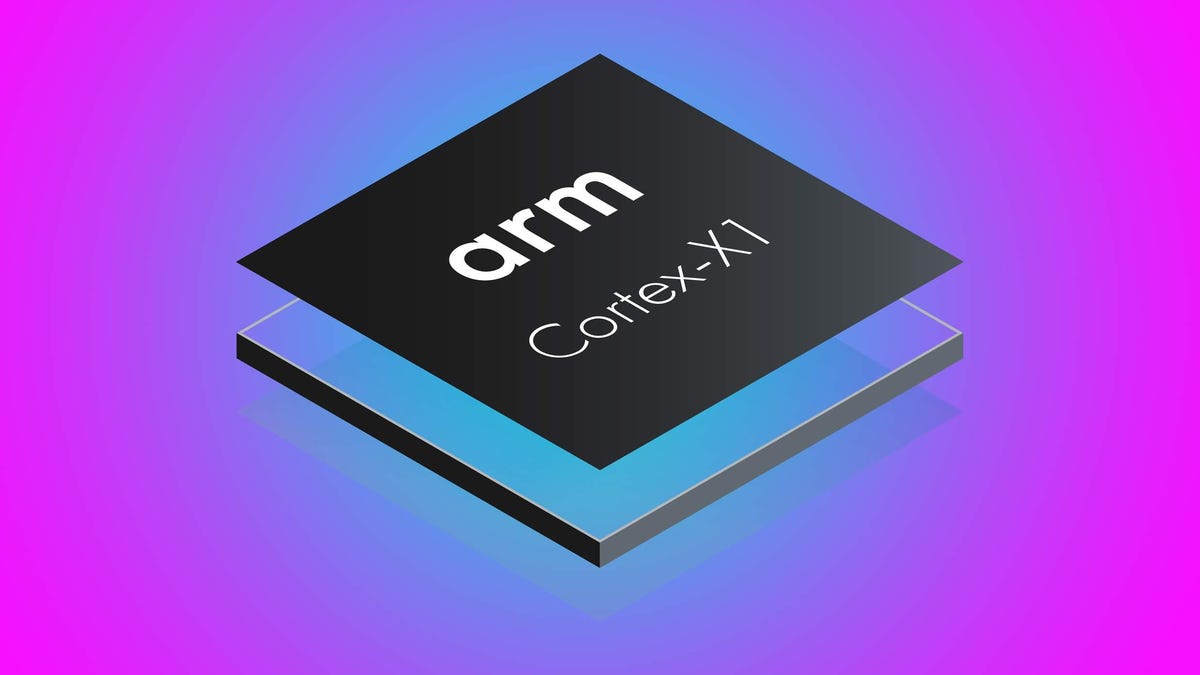Arm's new chip architecture boosts security, speed for billions of processors
Armv9-based chips will arrive starting this year.

Arm's new technology should make its way into an estimated 300 billion processors starting this year.
Arm , whose chip technology reaches every smartphone and just about every corner of the computing industry, announced a new processor architecture Tuesday designed to significantly improve security and performance. The architecture, called Armv9, should make its way into an estimated 300 billion processors starting this year through the next decade, the UK company said.
Armv9, a successor to the Armv8 technology that emerged last decade, isn't a chip design. But it governs how chips work, including the set of instructions that software uses to control the chip and architectural details about how those instructions are carried out.
Even if you don't know a computer chip from a tortilla chip, Arm's technology is in your life thanks to the company's licensing deals. Every phone, whether iPhone or Android, uses Arm-family chips designed by companies like Qualcomm , Apple , Samsung , Huawei and MediaTek. The chips also appear in much more basic devices, like Arduino computers for hobbyists, and in Fugaku, the world's fastest supercomputer.
Arm isn't blowing smoke when it estimates that 300 billion Armv9 chips are in our future. About 100 billion Arm chips have shipped just in the last five years. The highest-profile new examples are the Apple-designed M1 processors that power new MacBooks.
The breadth of Arm's alliances is a problem when it comes to Nvidia, a major maker of graphics and AI chips, and its plan to acquire Arm for $40 billion. That plan doesn't sit well with Arm chip licensees like Qualcomm that compete with Nvidia. Qualcomm's incoming chief executive, Christian Amon, argues that "the strength of the Arm roadmap is its independence."
Armv9 improvements
Advancements in the Armv9 architecture are designed to bring Arm processors into the future, said Rene Haas, president of Arm's IP Products Group.
The Arm Confidential Compute Architecture will make cloud computing more secure by keeping computing work secret. If you're a customer of Amazon Web Services cloud computing, for example, Amazon wouldn't be able to see details of how you're using your computer. That's important for customers in health care, government, banking and other areas where customer data must be protected.
Armv9 also improves how chips will be able to perform artificial intelligence tasks, a hot area of computing used for tasks like recognizing speech, filtering out spam and processing photos.
And overall, Armv9 improvements -- combined with improvements to software development tools -- will mean a 15% performance boost to Arm chips this year and another 15% next year, Haas said.
"We know we have to continue to invest in performance," Haas said.
Apple and Qualcomm Arm chips
For those who want it, Arm also licenses full-on chip designs. The company has dramatically expanded that work in recent years.
But some companies, including Apple and the startup Nuvia that Qualcomm just acquired, prefer to create their own Arm designs. The idea there is to build chips with higher performance than run-of-the-mill Arm-powered devices, a goal Apple has attained with its A series iPhone and iPad chips.
Qualcomm concluded that Arm's in-house designs weren't fast enough. The "Arm roadmap does not allow us to lead in the CPU performance for the next-generation computing devices," Amon said in a recent interview.
Arm's stronghold is with power-efficient devices like phones where preserving battery life is crucial. But the company is branching out into laptops and into the servers that pack data centers. Companies like Google , Amazon, Facebook and Microsoft buy thousands upon thousands of server processors, but Arm has had a tough time cracking that market. Its Neoverse designs, though, have gained a foothold with Amazon's Graviton 2 processors, Haas said.
"It takes a lot of investment in the server space to win," Haas said. "We're not where we want to be, but we're in much better shape than three or four years ago."

